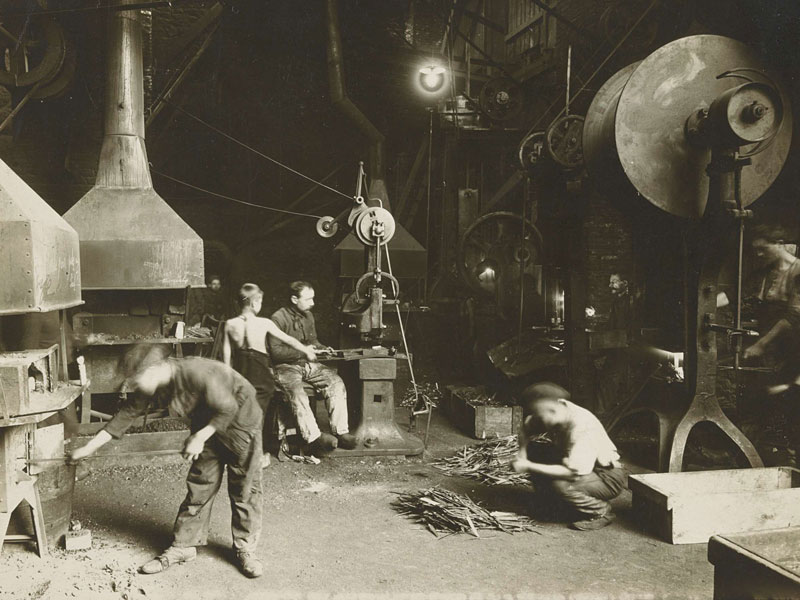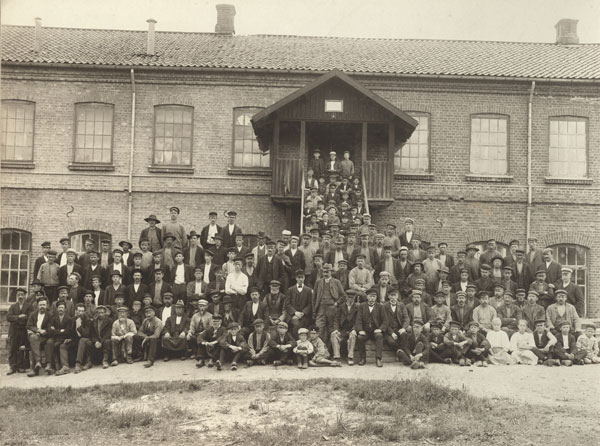Children have been a much-loved subject of pictures from the very early days of photography. A substantial amount of 19th and early 20th century photography featuring children has a social documentary value rather than solely an aesthetic one, portraying
Children have been a much-loved subject of pictures from the very early days of photography. We can find many adorable photos of kids posing in fancy dress or with their beaming parents in joyful family portraits in the early photographs.
Yet a substantial amount of 19th and early 20th century photography featuring children has a social documentary value rather than solely an aesthetic one.

Soon after the birth of photography (c. 1830), people realized that the power of the medium to inform and persuade could be turned to a good cause. Photographers consciously started to portray the harsh lives of children at work - a silent and often ignored group in the industrial age.
Putting their circumstances on display and raising awareness provided much-needed leverage for concrete actions toward change, especially in the hands of skilled and persistent photographers such as Lewis Hine.
RELATED: Read blog: Children in the machine: Lewis Hine’s photography and child labour reform
Child labour was not uncommon in pre-industrial times, mostly helping out at the family farm or participating in handicrafts.
By the late 18th century, however, the domestic setting was replaced by an external working environment. Factories and mines in particular set their sights on children: taking advantage of their youthful energy, gaffers installed long working hours and used children for the most dangerous jobs in return for the lowest pay.
This etching of a mineshaft illustrates how their tiny postures made them more suitable for specific tasks and environments. Furthermore, they were more easy to manage and proved more difficult to organise for the emerging workers’ unions.
Children were often sole breadwinners and had no option but to earn money in whatever way possible, leaving little chance for education or many opportunities to play. Working children of the industrial age enjoyed no special status, neither in private nor in public: just another set of hands or an extra mouth to feed, they belonged to the same world as their parents, grandparents and the rest of the household, sharing the same responsibilities.
These children mostly appear in portraits as adults, featuring no discerning clothes or attributes.
In middle class families, children took up a central role as well, but in quite a different way. As the family was regarded the cornerstone of society, children gave purpose to all activities, household arrangements and social connections.
Photographs cultivating the image of the close-knit, happy family, or celebrating the romantic ideal of childhood as a time of innocence and purity, are common in this context. The obvious contrast between the middle-class notion of childhood and the living conditions of poor children, gave rise to the first campaigns for the legal protection of children from the late 18th century onwards.
Great Britain took the lead, passing a first law as early as 1802. About 30 years later, the Factory Act established a system for inspections. Throughout the 19th century, working hours were limited, while the minimum age for employment was raised. By 1901, the permissible child labour age in the UK was raised to 12 - a milestone.
RELATED: Explore this gallery of images and photographs of child labour
At about the same time, international efforts were made to regulate child labour. Compulsory schooling was installed and, across Europe, existing legislation was effectively enforced.
More than a century onwards, however, child labour is a phenomenon still very much alive.
As recent as in 1960, a report of the United Nations showed that, especially in non-industrial jobs, young workers are still not sufficiently protected. In developing countries, moreover, children make up to 10% of the workforce in mines, factories, agriculture and services. So campaigning continues, with 2021 set as an important target date by the International Programme on the Elimination of Child Labour: the year in which the elimination of child labour should be a fact, and photographs such as these should relics of what we can finally call ‘history’.
By Sofie Taes, KU Leuven
Feature image: Children at work in a metalworking factory, 1910, Rijksmuseum, Public Domain
Europe at Work: Share your story
Did you or members of your family work as children? Share your story and help us tell the story of Europe through our working lives in the past and the present.
This blog post is a part of the Europeana Common Culture project, which explores varied aspects of our shared cultural heritage across Europe.


